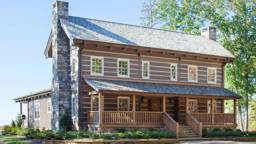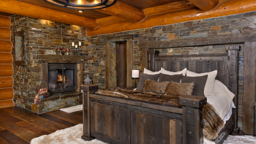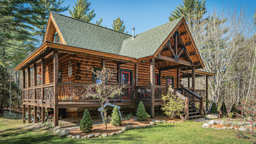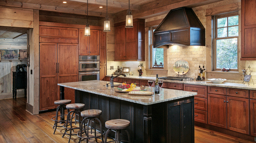The past few years haven’t been a picnic, to say the least, and although we’ve started to integrate into society more each day, we still look to our homes to provide a safe space for work and play.
If you’re still seeking out your ideal retreat, you’re not alone. Log and timber home designers say today’s buyers are specifically looking for homes that rejuvenate and replenish their spirits, with amenities that can support family life and help them reconnect with friends. The reasons range from the practical (housing an aging parent or earning passive income) to playful (adding a boat house on a lake, a yoga studio or a game room), and two of the tactics that can help accomplish these goals happen to be log and timber home trends on the rise. Enter ADUs and FROGs.
ADUs
Sought-after amenities can be as simple as a backyard fire pit or outdoor kitchen; however, some log and timber home buyers are thinking a bit bigger by adding what’s technically called an “accessory dwelling unit,” or ADU, but is more commonly called a casita, a bungalow or even a “granny flat.” These places are almost always separate, self-contained, detached or semi-detached buildings that include all the basics of any house (think: kitchen, living area, bedroom and bath), but on a smaller scale.
“We have two current projects that have ADUs — one in Idaho and one in Wyoming,” recalls Matt Franklin, lead architect at M.T.N Design in Meridian, Idaho. “One client even lived in their ADU while their main home was under construction.”
While ADUs are typically smaller, usually within the 800- to 1,000-square-foot range, don’t expect them to be inexpensive, Matt advises. “Typically, they are more expensive per square foot than the main structure because you don’t get the economies of scale that you do with the larger space.”
Though they may not be cheap to build, they can pay for themselves. ADUs often are used as a source of rental income or as a future retirement home, where the homeowners downsize to the ADU, then rent out the larger, main residence to help fund their golden years.
The key to an ADU’s success is its design, and specifically incorporating log and timber frame building systems and other rustic features will help it stand out from other units, according to Michael Grant, principal of Modern Rustic Homes in Ellijay, Georgia.
“I tell people that if you build in the charm, they will come. I built a guest house which I turned into an Airbnb rental. It has nearly 100 percent occupancy,” Michael says. “I’ve learned that you develop a following of past guests that share their appreciation of your property with friends and family. Amenities like outdoor fireplaces are mood setters. People love them.
“We’re also doing more casitas that are physically connected to the house with a private entrance, mini kitchen and access to a courtyard,” Michael continues.
Know the Code.
Log and timber homes often are built on vast pieces of land, so you may think that you automatically have the right to build an ADU within your property lines; however, that may not be the case. Some jurisdictions have limitations on how many residential structures can be built on a parcel and/or require minimum lot sizes and setbacks, as well as have maximum occupancy caps. So, before you think about breaking ground, you’d be wise to pay a visit to your local planning office to learn what’s possible.
Once you get the all-clear, the process for adding an ADU to your property is much the same as it was for building your primary house. All plans must be engineered for the site, permitted and approved by your local building inspector along key milestones.
FROGs
You may like the idea of the independent space an ADU would provide, but you may not have the budget, property or even zoning permissions necessary for this type of mini-house. You still have options, and they may be even closer to home than you think: Enter the FROG (finished room over the garage).
If planned and designed properly, the volume above a garage can easily be converted to found living space, and its uses can range from an apartment for post-college children to a unit that generates rental income.
“Last year we built a FROG to be a caretaker’s quarters,” Michael recalls. “It opened off the garage from a vestibule that allowed access into the garage and the main house, as well as the apartment.”
One of the most important strategies for adding a FROG is to spend time on its design so that the gables, windows and other exterior features are in harmony with the rest of your home. This includes everything from facade details, like trim, to practical considerations, such as whether your staircase is located inside or outside the garage itself.
And while it may seem like a simple remodel, Matt and Michael warn that FROG is not a DIY project. Both suggest to hire pros because FROGs quickly become quite complicated, involving multiple trades, including electrical, plumbing and structural engineering.
Know the Code.
Just as with an ADU, before you embark on any additional living quarters to your existing home, your first stop should be to the city or county zoning department to see if a FROG is allowed by the local building code. Height restrictions, additional parking requirements or restricted distances to the property line could impact your plans.
If building codes are a go, then start the design process from the outside in. Again, you’ll want to make the design seamless with the rest of the home. Engineers will need to verify the foundation, framing and property line locations are code compliant. If the foundation needs to be replaced, that can quickly become a budget buster.
Adding Insulation.
To ensure your FROG remains inviting for all four seasons, designers recommend extra insulation for the roof and walls. If your budget can afford it, expanding spray foam insulation is the better option over fiberglass batt insulation.
Extending Utilities.
Extending plumbing and electrical runs can be challenging. Plumbing lines must be placed within the thermal envelope, not in exterior walls, to avoid weather extremes. As for power, an additional electrical panel will be needed, placed within the interior with easy access, to meet building codes. If your FROG will be rented to tenants, be sure that all utilities are on separate meters from the primary house, unless you plan to include them in the monthly rent.
Creating Access.
One of the most challenging components of planning a FROG is determining how its occupants will access it. One solution is a stairway on the outside of the gable wall with two landings — one at the halfway point and the other at the top. If the person(s) living there are trusted family or friends, you may consider an interior staircase within the garage; however, they can take up quite a bit of room within that space. Spiral stairs may be an internal option for those on a budget, but if funds allow, you could install an elevator. Residential elevators have come down in price, with the national average at $30,000. Though they seem like a luxury, they can add functionality for seniors and people of any age with mobility challenges, as well as being convenient for hauling groceries, furniture or equipment between floors.
So, if the pandemic was good for one thing, it showed us that there really is no place like home. By expanding the way we think about the spaces we live in — as well as who we share those spaces with and how we go about it — we can get the most out of our houses now and for years to come.
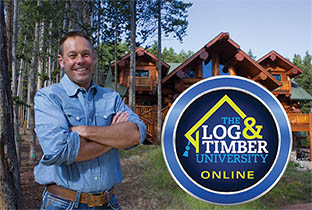
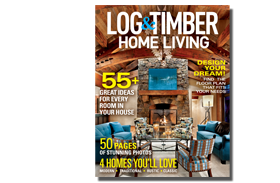



_11868_2023-12-20_08-12-256x288.jpg)
